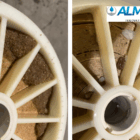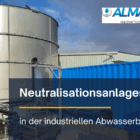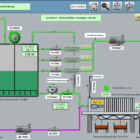Laundry wastewater is produced by industrial and commercial laundries that clean, dye or finish textiles in large quantities. Due to its complex composition, this wastewater places special demands on treatment and processing. It contains a variety of organic and inorganic impurities, including surfactants, oils, fats, dirt particles and chemical residues from detergents or textile finishing processes.
Table of contents
Characterization of laundry wastewater
Composition
The composition of laundry wastewater is heavily dependent on the detergents and cleaning agents used and the textiles treated. Typical ingredients are
- Surfactants: Anionic, non-ionic and cationic surfactants from detergents and fabric softeners.
- Greases and oils: From soiling of textiles or from lubricants from machines.
- Heavy metals: Residues from textile dyeing and finishing processes (e.g. chromium, copper).
- Particles: Dirt, dust and textile fibers.
- Nutrients: Phosphates from detergents.
- Chemicals: Bleaching agents (e.g. hydrogen peroxide, sodium hypochlorite) and disinfectants.
Challenges
- High organic load: High values for chemical (COD) and biological oxygen demand (BOD).
- Toxicity: Some ingredients, such as heavy metals or surfactants, can be toxic to aquatic organisms.
- Fluctuating load: The composition of the wastewater varies greatly due to batch operation or changing cleaning cycles.
- Foaming: Surfactants can lead to heavy foaming in waste water pipes.
Wastewater treatment requirements
The treatment of laundry wastewater must aim to effectively remove pollutants in order to comply with legal discharge limits and minimize environmental pollution. Depending on the objective, treatment may include
- Reduction of organic loads: Degradation of COD and BOD-relevant substances.
- Removal of surfactants and chemicals: To minimize foaming and toxic effects.
- Phosphate reduction: To prevent eutrophication in bodies of water.
- Solid separation: Retention of textile fibers and dirt particles.
Treatment process for laundry wastewater
Treatment is carried out in several stages, combining physical, chemical and biological processes. The most important processes are listed below:
1. chemical-physical treatment
Chemical-physical treatment in CP systems is a central process in laundry wastewater treatment. The aim is to convert dissolved pollutants into insoluble particles through chemical reactions, which can then be separated. This process not only improves the water quality, but also protects subsequent treatment stages from overloading or damage.
Precipitation and flocculation
Principle of precipitation:
Dissolved pollutants such as phosphates, heavy metals or surfactants are converted into insoluble compounds by adding precipitants. These compounds form small particles that can be removed by sedimentation in CP systems or flotation.- Precipitants: Typically, iron or aluminum salts such as iron(III) chloride (FeCl₃) or aluminum sulfate (Al₂(SO₄)₃) are used. Milk of lime (Ca(OH)₂) can also be used for pH adjustment.
Flocculation:
Flocculation aids, often organic or inorganic polymers, stabilize the resulting particles and cause the formation of larger flocs. These larger flocs are easier to remove and increase the efficiency of sedimentation or flotation.
Neutralization
Importance of pH value adjustment:
Many chemical reactions in wastewater treatment, including precipitation and flocculation, only run optimally in a specific pH range. For example, the hydroxide precipitation of heavy metals takes place at a pH value of around 8.Technology:
- Alkaline neutralization: Acidic wastewater is neutralized by adding alkaline solutions such as caustic soda (NaOH) or milk of lime.
- Acid neutralization: Alkaline wastewater is adjusted to the optimum pH value by adding sulphuric acid (H₂SO₄) or hydrochloric acid (HCl).
Process monitoring: Inline pH sensors and automated dosing systems ensure precise and continuous neutralization.
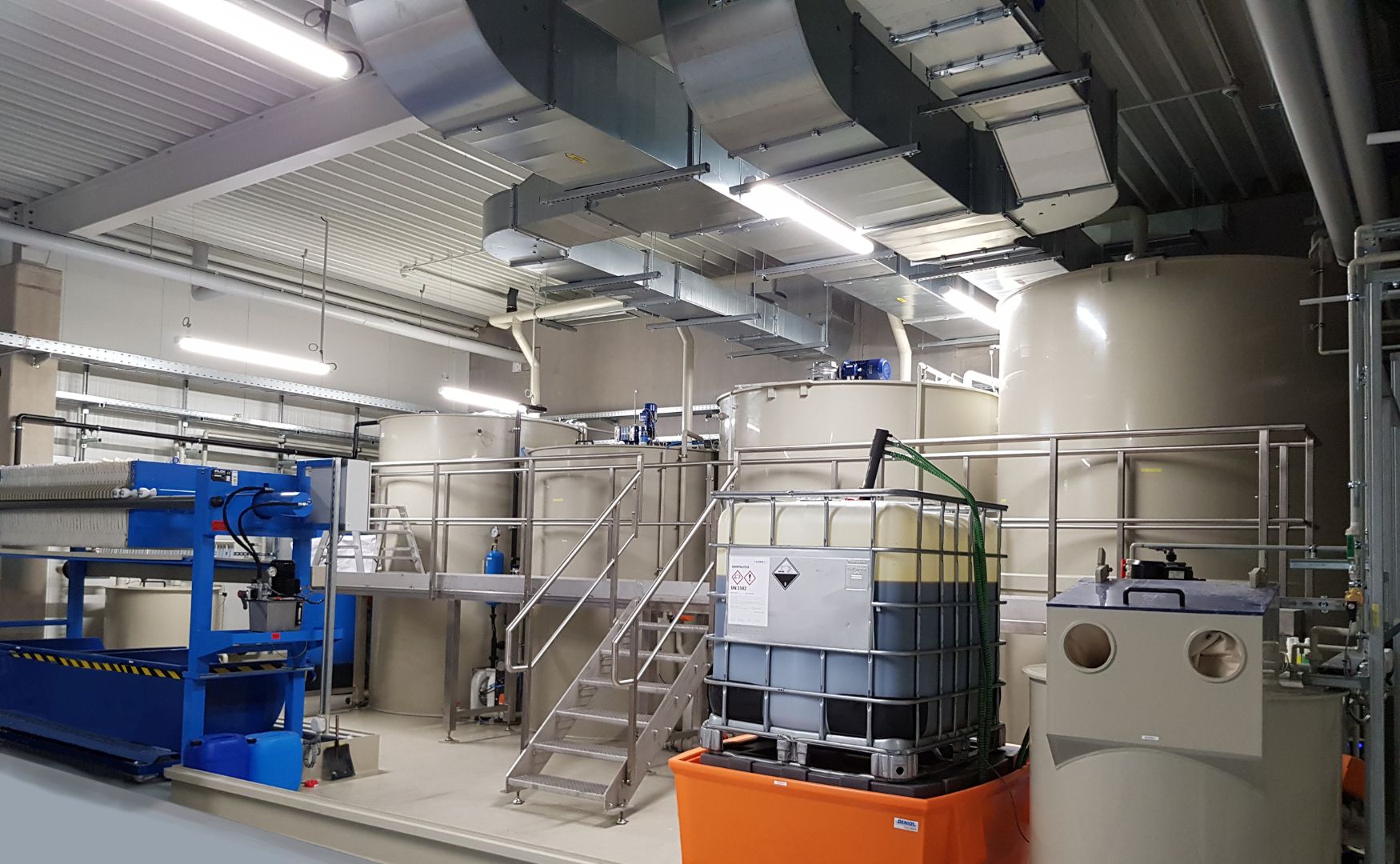
Photo: Our ALMA CHEM MCW CP system for the neutralization and precipitation of pollutants
Dissolved air flotation (DAF)
How it works:
The DAF system removes the finest suspended solids, oils and fats from wastewater using microbubbles. These bubbles bind to the particles and transport them to the water surface, where they can be skimmed off as foam.Technology:
- Water is saturated with air under pressure and then expanded, creating microbubbles.
- The microbubbles bind to suspended particles, which rise to the surface due to their lower density.
Applications:
Dissolved air flotation is particularly effective for removing oils, fats and fine particles that are difficult to separate by sedimentation.
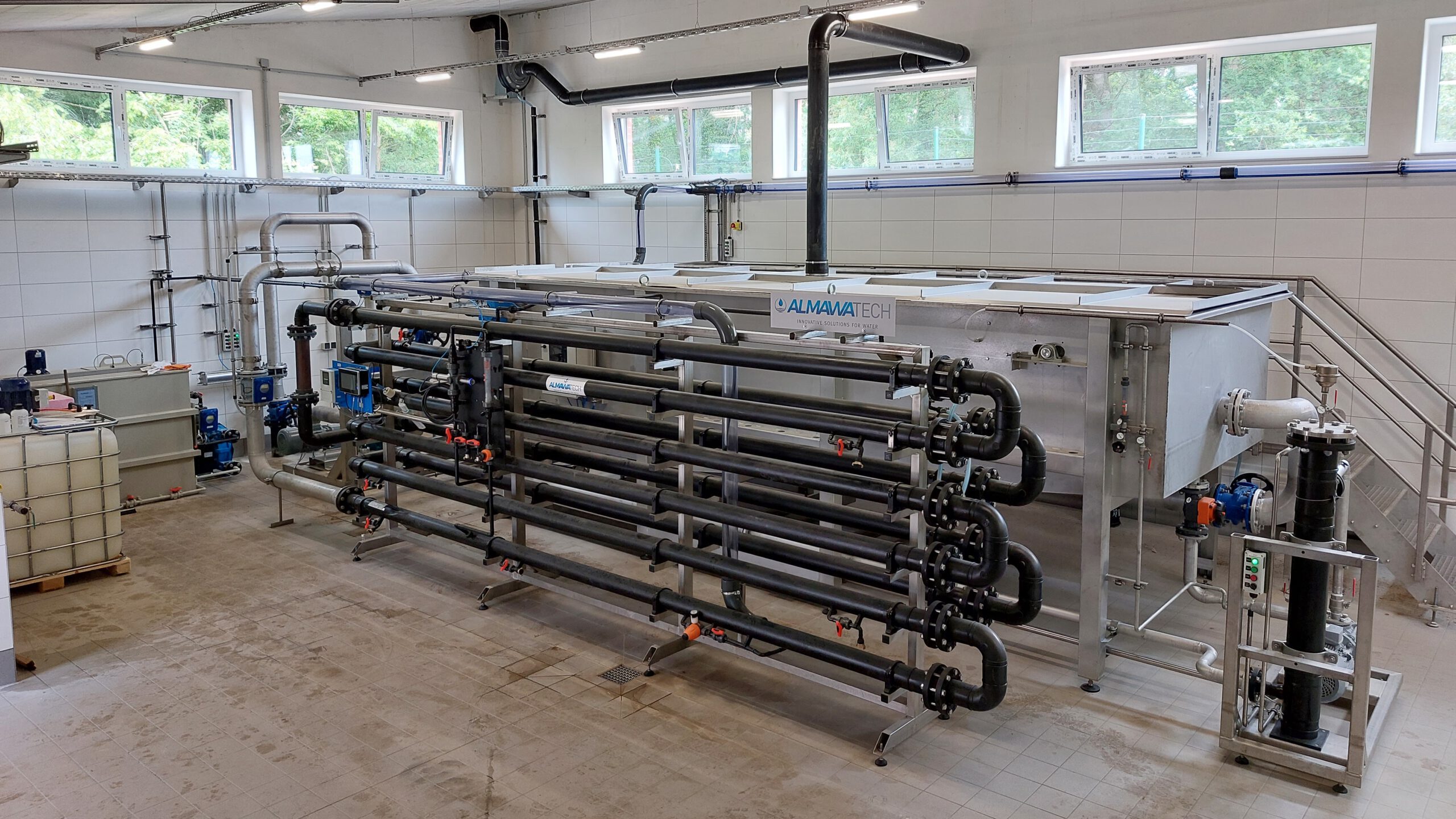
Photo: Our ALMA NeoDAF flotation system with load-proportional dosing of precipitants and flocculants
2. biological treatment
Biological treatment aims to break down organic compounds and reduce the residual load in the wastewater. Microorganisms play a central role here, as they convert organic substances into simpler compounds such as water, carbon dioxide or methane.
Activated sludge process
Aerobic degradation:
Microorganisms use oxygen to break down organic compounds. The process reduces the chemical oxygen demand (COD) and biological oxygen demand (BOD) of the wastewater.Cyclical processes:
- Nitrification: Ammonium (NH₄⁺) is oxidized to nitrate (NO₃-).
- Denitrification: Nitrate is reduced to nitrogen gas (N₂) under anoxic conditions.
Advantages:
Efficient reduction of organic loads and nitrogen compounds.
Biofiltration
Principle:
Microorganisms settle on special carrier materials such as sand, activated carbon or plastic granulate. These biofilms break down organic substances while the wastewater flows through the filter.Application:
Biofiltration is particularly suitable as a pre-treatment for reverse osmosis systems, as it reduces organic loads and minimizes fouling on the membranes.
Anaerobic treatment
Process:
In anaerobic reactors such as UASB (Upflow Anaerobic Sludge Blanket), microorganisms break down organic substances without oxygen. This produces biogas, a mixture of methane (CH₄) and carbon dioxide (CO₂).Advantages:
- Energy generation: The biogas produced can be used as fuel for energy generation.
- High COD reduction: Particularly effective for heavily contaminated wastewater.
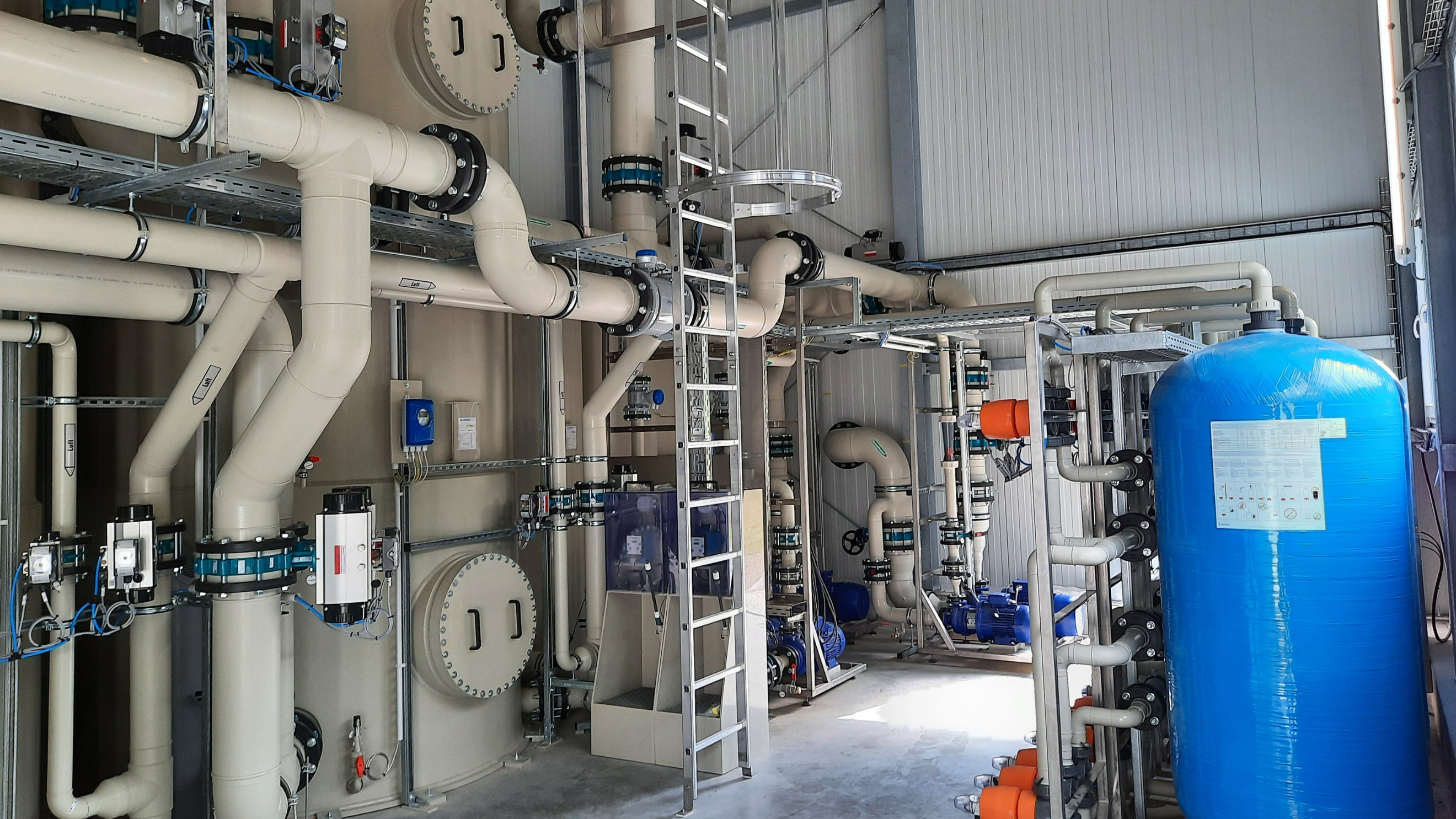
Photo: Our ALMA BioFil Compact biofiltration system for the treatment of organically contaminated wastewater
Water recycling in laundries
The recovery and reuse of water from laundry wastewater is becoming increasingly important in order to reduce costs and increase resource efficiency:
- Process: After mechanical, chemical and biological treatment, membrane processes such as reverse osmosis are used to make the purified water usable for further washing cycles.
- Advantages: Reduction of fresh water consumption, reduction of operating costs and minimization of environmental impact.
Challenges and future of laundry wastewater treatment
The treatment of laundry wastewater requires continuous adaptation to new regulations and technologies:
- Stricter discharge limits: Especially for phosphates, surfactants and heavy metals.
- Energy efficiency: Integration of anaerobic processes for biogas production as an energy source.
- Automation: Use of online measuring systems for real-time monitoring of wastewater quality and optimization of processes.
Conclusion
The treatment of laundry wastewater represents a technical and ecological challenge that can be overcome through the targeted use of modern technologies. A combination of chemical-physical and biological processes ensures efficient removal of pollutants and compliance with legal regulations. At the same time, the recovery of water and energy offers enormous potential for reducing costs and conserving natural resources. With customized concepts, wastewater streams can be treated sustainably and economically - a decisive contribution to a future-oriented laundry industry.
For further information on our products, please feel free to contact us at any time!


